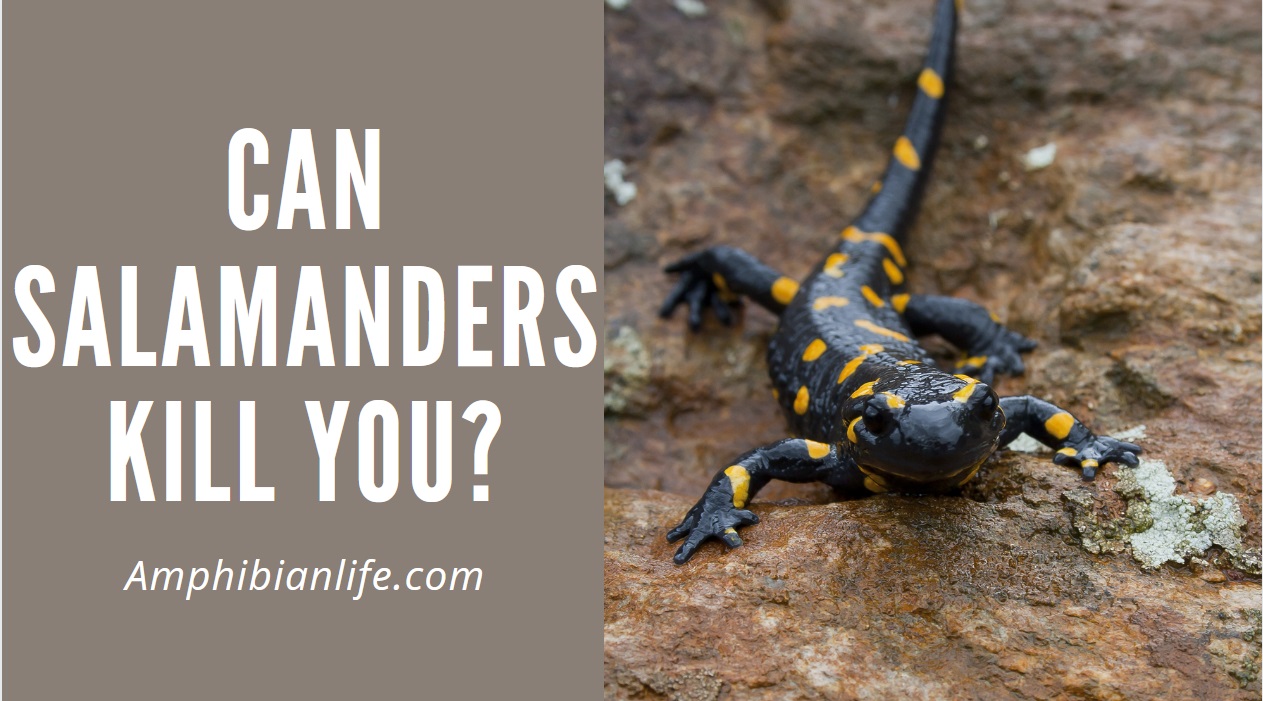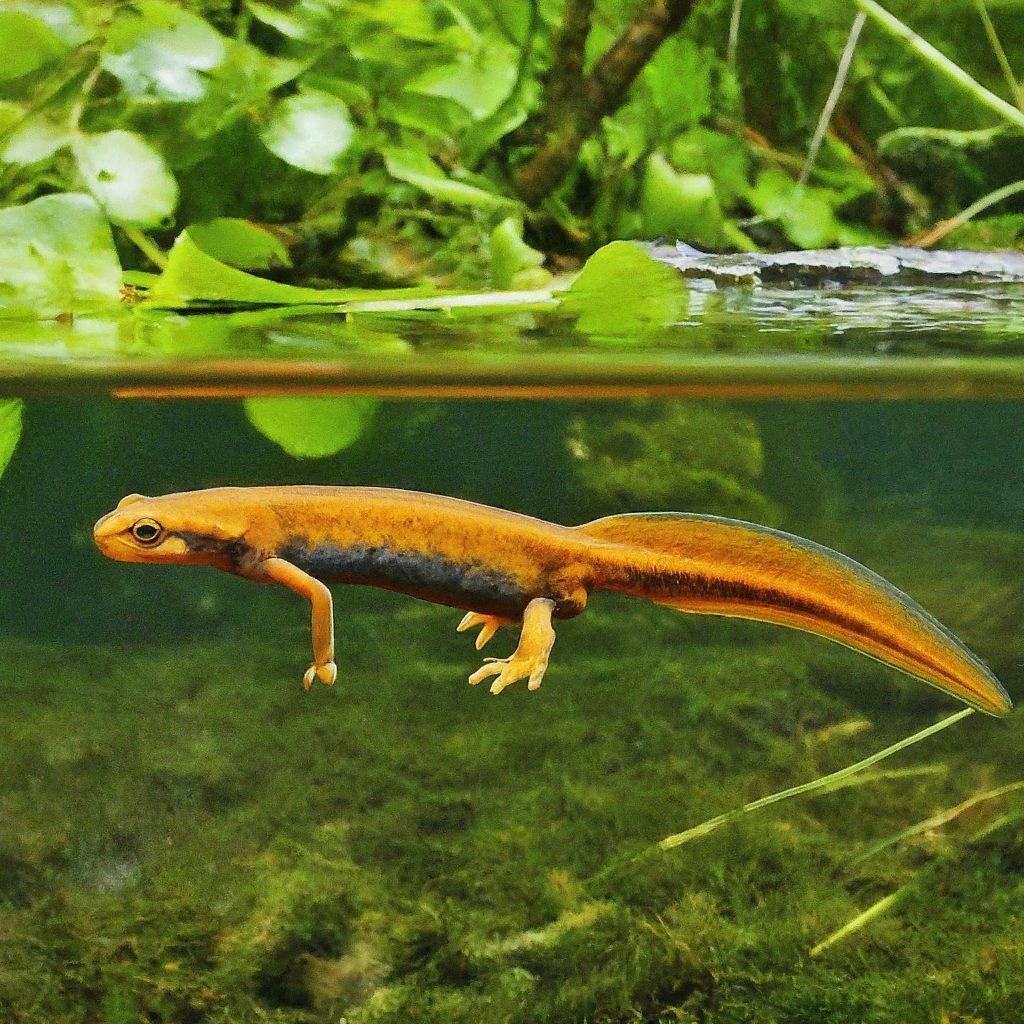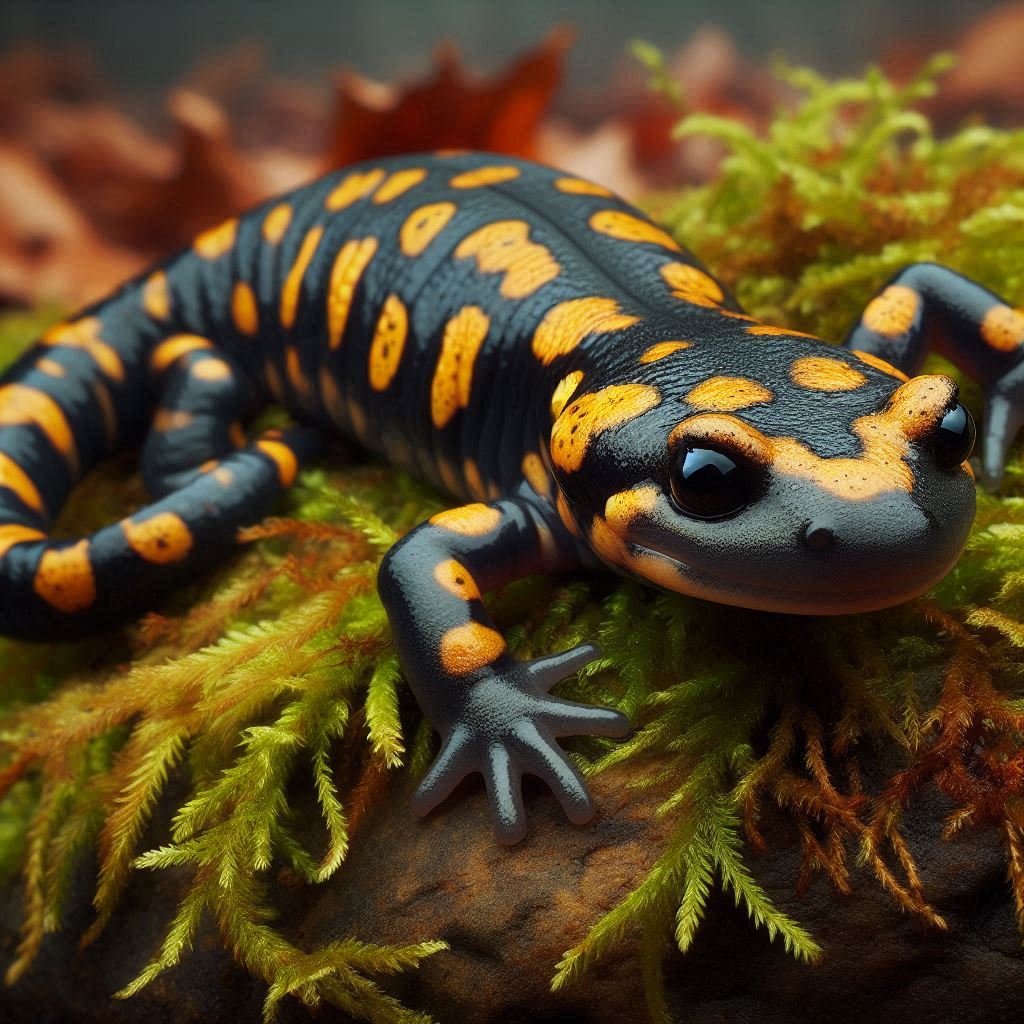
Salamanders are not very common pets, but if you want to keep a salamander as a pet, you should probably know whether are poisonous. Read on to find out…
Are salamanders poisonous? Can salamanders kill you? Yes, salamanders are poisonous. They secrete toxins through their skin and when these toxins get ingested they can be poisonous.
The toxicity varies per species and the juveniles are generally more toxic than adults.
Normally salamanders are creatures that do no harm. But it is good to know that all salamanders species are poisonous and it is therefore best to keep handling salamanders to a minimum!
Salamanders are toxic when you eat them, when you ingest their secretion, or when you “play” with them. For instance, if you pick them up with your hands and then rub your eyes.
The poison that a salamander carries is made in the parotoid or granular glands. Some people say that salamanders get poisonous through eating and drinking or otherwise obtaining strong bacteria such as Vibrio spp.
Are salamanders a danger to people?
Though they are poisonous, and can therefore be dangerous, salamanders are not usually a major threat to people.
They are normally very shy creatures that would rather flee from you than come up to you. They are completely harmless if you don’t touch them or otherwise ingest their toxins.
And you can be dangerous to salamanders too! Salamanders have very absorbent skin, so bacteria, oils, and salts from our hands can harm them. Things like sunblock and hand lotion can cause serious damage to a salamander. This is another reason why, with salamanders, it’s best to look but not touch.
If you do need to handle them, make sure that you have washed your hands beforehand or you can always go out and buy some vinyl gloves. This way the salamander is safe from anything that is on your hands.
What is the most poisonous salamander?

The most toxic salamander is the Rough-Skinned Newt.
The Rough-Skinned Newt is found in North America, from Santa Cruz County all the way to San Francisco Bay and Alaska. It is also found on several islands, including Vancouver Island.
Related article: Where do salamanders live?
Habitat of the Rough-Skinned Newt
The rough-skinned newt is found both on land and in aquatic environments. Though they spend most of the time on land.
They mostly go to water during breeding season, when it is time to mate.
An interesting fact is that the Rough-Skinned Newt becomes temporarily aquatic when there is a dry season. It is also possible for this newt to spend its whole life in the water.
What does a Rough-Skinned Newt look like?
Unsurprisingly, the Rough-Skinned Newt has a rough and grainy skin.
They are dark with orange coloration and about 12.7 to 21.6 cm in length. Their eyes are small and do not extend past the edges of his head as you can see in the picture.
You can also see that they have yellow irises and that the lower part of the eyelids are orange.
What you can’t see on the picture are the vomerine teeth. A salamander’s teeth are arranged in a V-shaped pattern.
Does a salamander make a good pet?
Now that you know salamanders are poisonous, you might want to know whether they make good pets…
If you just want an animal to look at behind glass, a salamander is a great pet. However, if you want a pet that you can really interact with, hold, and play with, you’d be better choosing something else.
If you do decide to go for a salamander as a pet, we recommend the Tiger salamander (also known as Ambystoma tigrinum).

This is a common pet salamander because they are attractive and fairly easy to care for. This species grows to 13 cm in length and has a lifespan of about 25 years if you take good care of them.
Pet salamander habitat
The stage your tiger salamander is in will dictate what kind of tank setup you need.
If he’s still in the larval stage you need a fully aquatic tank. But when the salamander ages and grows gills, you would need to set up a semi-aquatic and land habitat so they can also go on the land.
Once they are fully grown, you should move your salamander to a 20-gallon tank. Make sure that the temperature in the enclosure is around 65 to 70F and add plenty of hiding spaces, rocks, and enough bark and rocks.
The feeding of this salamander is fairly easy. when he is still in the larval stage you can feed him shrimp, insects, small fish, and worms. When he grows into an adult you can feed him crickets, earthworms, and other insects.
Again… Keep the touching to a minimum!
What are salamanders good for?
Believe it or not, salamanders are quite good for the environment and human beings in general. They play an essential role in keeping insect and arthropod populations in balance. Salamanders hunt these species and in this way they are helpful to humans because they act as a natural “pest control”.
Another way in which salamanders are good for us is that they can prevent serious health issues by preying on insects. You see, salamanders also hunt mosquitoes and ticks. The bites of both of these animals can be very dangerous and by eating these insects, salamanders help to minimize the spread of diseases.
So even though salamanders are poisonous, they also help us survive here on planet earth!
What to do if you find a salamander
First of all, you need to know that you should not touch the salamander because they are poisonous. But if you find one in your home or basement, you should move them outside.
To avoid touching them, grab a small net and transfer the salamander outside.
If the salamander you found has a flattened and paddle-like tail, it likely is a newt and therefore you should put him nearby a pond or wetland. Put him on the edge, not in the water. This way the newt can decide for itself whether it wants to go into the pond or move to another place.
If the salamander you found has a stubby, fat tail, you can release him in a forest or woodland area. This should preferably be close to where you found the animal.
Related questions
Can salamanders regrow limbs? Salamanders are capable of regrowing limbs within a few weeks! This includes tails and toes. This is awesome because it helps them to survive attacks from predators.
Where does the name salamander come from? The name comes from the Greek word for Fire Lizard. Salamanders would often hide in logs and come running out when the log was thrown on a fire. When the greek saw this, they named them salamanders.
What is the largest salamander in the world? The largest salamander in the world id the Chinese Giant Salamander. This particular type of salamander can grow to a length of 5 feet!
